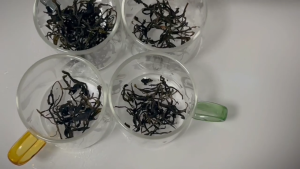The saying goes that good tea comes from high mountains and clouds. In high mountain and cloud areas, the air is fresh and high in oxygen content, which helps the growth and photosynthesis of tea trees, making the aroma of tea leaves purer. These areas are often shrouded in fog and mist throughout the year, providing abundant moisture for tea trees and conducive to their growth and the development of tea leaves. The soil in high mountain and cloud areas is typically rich in minerals, providing abundant nutrients for tea trees and contributing to the improvement of tea leaf quality. The significant temperature difference between day and night in high mountain areas helps tea trees accumulate nutrients, increasing the sweetness and flavor of tea leaves. Ample sunlight in high mountain areas facilitates photosynthesis in tea trees, increasing the content of pigments and amino acids in tea leaves, resulting in brighter colors and richer flavors. Tea leaves from high mountain and cloud areas typically have the advantages of rich aroma, fresh taste, and bright soup color. Compared to tea leaves from regular tea gardens, which are affected by human and animal activities, wild tea leaves have a superior taste.
The area around the 30th parallel north latitude is the golden zone for tea cultivation. This area boasts unique geographical advantages, with a suitable climate, fertile soil, and ideal conditions for tea growth. It mainly includes regions such as Fujian, Taiwan, Jiangsu, Zhejiang, Hunan, and Anhui in China, where the climate is usually characterized by distinct four seasons, mild winters, hot summers, abundant rainfall, and sufficient sunlight. Coupled with moderate altitude, undulating terrain, these conditions create a unique geographical environment conducive to the growth and development of tea trees. Tea leaves grown in these areas mature slowly, but they accumulate more nutrients during the growth process, resulting in higher-quality tea leaves. The tea produced in these regions typically has high quality, unique flavor, and strong aroma, earning them the reputation of “homeland of famous tea.” Heading up the mountain in spring and drinking spring tea, where does the freshness of spring tea come from? Below is an introduction to the process of pure wild, handmade wild tea production.
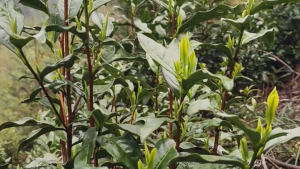
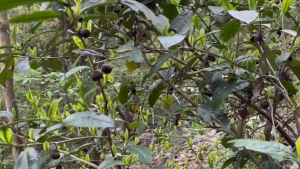
1. Harvesting: There is a technique to harvesting. Manual picking involves using both hands to extract the tea leaves upward. A gentle reminder: do not use fingernails to pinch, as it may cause the tea stems to turn black. There are three main techniques for picking tea leaves: plucking with fingers, plucking with fingers and hands, and plucking with both hands. Among them, plucking with fingers and hands is the standard technique, requiring coordination between the thumb and index finger. The picked tea leaves need to meet the standard of one bud and two leaves or one bud and one leaf. The taste of one bud and one leaf is light and mellow, while one bud and two leaves are slightly stronger in flavor and deeper in color. The size of the bud and leaf should be similar to the thumb to better control the withering time. Mainly pick tender buds and leaves, as they have a tender texture and produce a fresher tea soup.
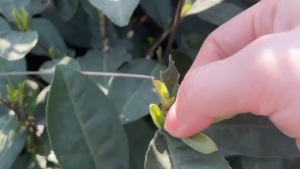
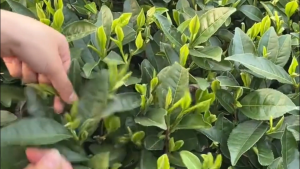
2. Withering: Natural evaporation of moisture from tea leaves allows them to wilt naturally.
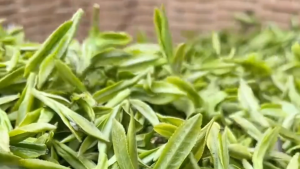
3. Fixation: Fixation, also known as “frying tea,” softens the tea leaves. Fixation plays a decisive role in the quality of green tea by destroying the enzymatic activity in fresh leaves. It stops the oxidation of polyphenols to prevent the leaves from turning red. At the same time, it evaporates some of the moisture inside the leaves to make them softer, creating conditions for rolling and shaping. This step helps the tea leaves maintain their original color and aroma. During frying, it is necessary to evenly heat the tea leaves. The aroma of frying tea is captivating, and shaking is required to remove the grassy smell from the tea leaves. The tea leaves start to change color after frying, and achieving the right level of heat is crucial. Once the tea leaves produce a crisp sound during frying, it is considered done.
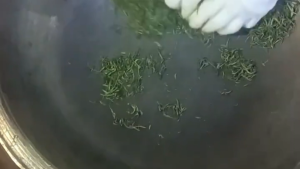
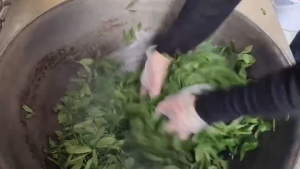
4. Rolling: Generally, one or two rolling processes are carried out during fixation, followed by cooling.
5. Rolling and Shaping: The tea leaves are rolled and pressed to shape them. Rolling and shaping is a process that molds the appearance of green tea. It breaks the leaves and makes them lighter, forming them into strips or balls, which facilitates the dissolution of tea juice in water during brewing and enhances the concentration of tea flavor. This step helps to release the aroma of the tea leaves.
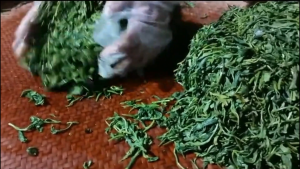
6. Sorting: After frying, the tea leaves are neatly sorted. Sorting makes the shape of the tea leaves more uniform and visually appealing. Hand-fried tea leaves should not be pressed, as they are delicate and pressing them will result in many broken pieces.
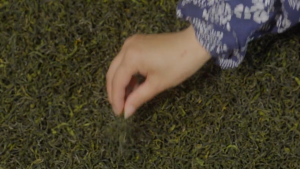
7. Drying: Drying involves baking the tea leaves to remove moisture. After sorting, the tea leaves are filtered through a sieve and then placed on charcoal for baking. This process allows the tea aroma to fully develop and evaporates moisture from the leaves, making them dry. With these steps, a cup of fragrant and refreshing tea with a long-lasting flavor is ready.
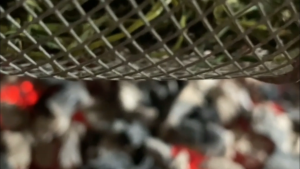
8. Brewing: Enjoy a cup of spring tea, take a sip of freshness, and feel a sense of tranquility and contentment.
